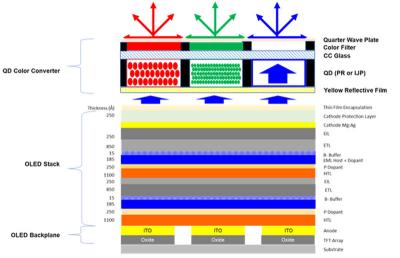DSCC updates its 2019-2025 OLED market forecasts
DSCC updated their display industry forecasts, saying that as LCD prices continue to fall it revises the capacity forecast downward by 6% as Display makers are delaying and cancelling LCD investments. DSCC's OLED capacity forecast is also reduced by 4% - and is now growing at a CAGR of 19% from 2016 to 2025 (the main reason is the cancellation of Visionox V2 phase 2 and LGD's E6 Phase 3).
DSCC says that OLED TV roadmap is still not clear as Chinese makers are not ready to commit to OLED TV production. DSCC does see next-generation TV capacity coming online in the future - which could be inkjet-printed OLEDs, OVJP, MicroLEDs and other potential technologies. But the next-generation display market is certainly not clear yet and DSCC sees an extended forecast during which demand will outpace supply (especially as average TV size continues to grow).







